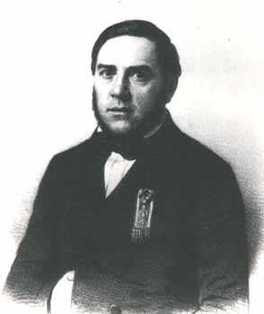In the 19th century many French people lived in voluntary or enforced exile in London, including in various parts of South London. So I thought I'd run a short series of posts on some of them, starting with Martin Nadaud:
Martin Nadaud (1815-1898) grew up in the Creuse region of central France, before moving to Paris as a stonemason. He was on the secret strike committee during the first ever French national building workers strike in 1840. In a period of recession, thousands marched behind a banner declaring 'Let us live working or die fighting'.
Nadaud participated in the 1848 revolution, and became the first working class Member of Parliament in the National Assembly. In December 1851 the Republican government was overthrown in a coup. Nadaud was jailed for a month and then ordered into exile, making his way to London early in 1852 where he worked on building sites and lived in lodgings in various places including Soho, Islington, Greenwich, Blackheath and Lambeth. He visited the Crystal Palace in Sydenham.

His periods living in South London seem to have been his most desperate. Recalling the winter of 1855, Nadaud wrote: 'At one point I fell into despair - really a terrible despair. I went and hid myself away in Greenwich, reduced to eating dry bread'. He described the accommodation where lived in a period of unemployment as 'a narrow, dilapidated and often fireless attic room in the little town of Greenwich'. In June 1856 he was living at a temporary address on the Old Dover Road in Blackheath, and in early 1858 in 'an obscure street in Lambeth, sandwiched between a railway viaduct, the archbishop's garden and the slum of Lower Marsh' (Tindall).

His periods living in South London seem to have been his most desperate. Recalling the winter of 1855, Nadaud wrote: 'At one point I fell into despair - really a terrible despair. I went and hid myself away in Greenwich, reduced to eating dry bread'. He described the accommodation where lived in a period of unemployment as 'a narrow, dilapidated and often fireless attic room in the little town of Greenwich'. In June 1856 he was living at a temporary address on the Old Dover Road in Blackheath, and in early 1858 in 'an obscure street in Lambeth, sandwiched between a railway viaduct, the archbishop's garden and the slum of Lower Marsh' (Tindall).
However his fortunes were to change in 1858 when he obtained a job teaching French at Wimbledon School under the assumed name of Henri Martin, and moved to live in Wimbledon village. He remained there until 1870, when he returned to France and resumed a political career, being elected as a republican and moderate socialist MP from 1876 to 1889. A station on the Paris Metro was named after him. His experiences in England, including long studies in the British Museum, informed his writing - in 1872 he published in French his 'History of the working classes in England'.
Wimbledon School still stands incidentally, though today it is known as Wimbledon College. Nadaud, who campaigned for secular education as a French MP, is no doubt spinning in his grave as the College is a Roman Catholic secondary school run by the Jesuits!
Source: Gillian Tindall, The journey of Martin Nadaud: a life in turbulent times (London: Chatto & Windus, 1999).



.jpg)













2 comments:
I am a great admirer of M.Nadaud and recently studied his life and times as my special subject on Mastermind. Sadly the metro station named after him is now called Gambetta. France seems determined to forget him despite his contribution to the buildings of the capital, particularly the Pantheon. He is sort of remembered in his local area (Creuse) but I guess at the moment autodidacts are not the most fashionalbe of heroes anywhere. M.Nadaud came from illiterate 'paysan' to 'homme politique' by his own efforts. He also taught in Ealing, in the St Mary's area.
Thanks Silver, clearly an interesting character, enjoyed Tindall's book. My French is poor, but I suspect there must be some more material about his time in London published in French.
Post a Comment